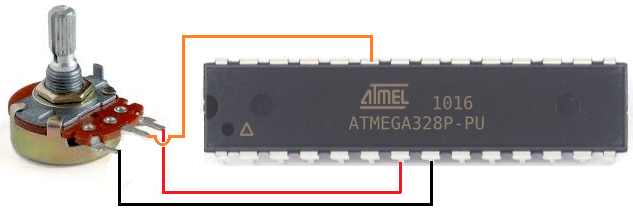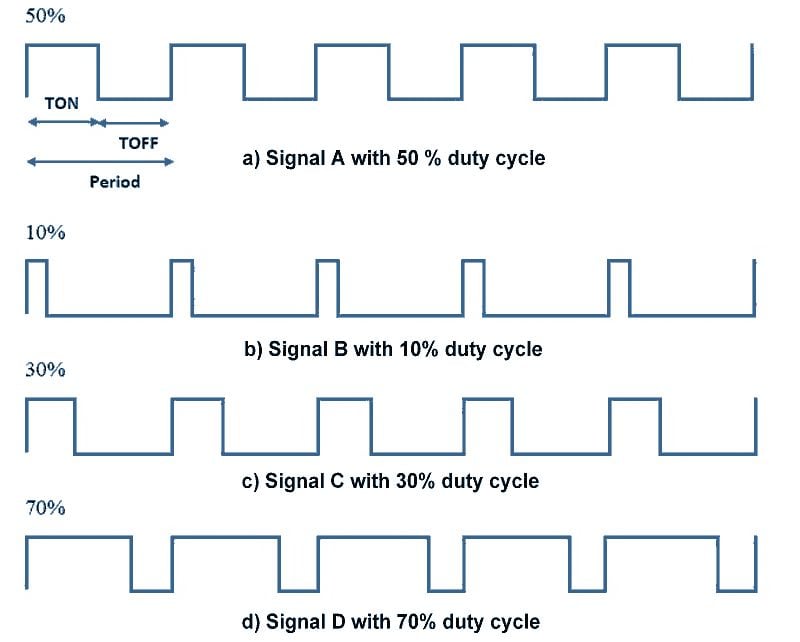How to read a potentiometer with an ATmega328P
Are you looking to learn how to read a potentiometer using an ATmega328P microcontroller? You’ve come to the right place! Potentiometers are widely used in electronic circuits to vary the resistance in a circuit. They are often used to control things like volume, brightness, and other analog aspects of a circuit.
In this tutorial, we will walk you through the steps on how to read a potentiometer value using the ATmega328P microcontroller, which is commonly found in Arduino boards. By the end of this guide, you will have a solid understanding of how to interface a potentiometer with an ATmega328P and read its value using the ADC feature.
Materials Needed
- ATmega328P microcontroller
- Potentiometer
- Jumper wires
Circuit Diagram
Before we dive into the code, let’s take a look at the circuit diagram for connecting a potentiometer to an ATmega328P microcontroller. Follow the diagram below to wire up your circuit:

Programming
Now that we have our circuit set up, let’s move on to the programming part. We will write a simple Arduino sketch to read the value of the potentiometer connected to the ATmega328P.
Here is a sample code snippet that reads the analog value from the potentiometer and prints it to the serial monitor:
// Define the pin for potentiometer
int potPin = A0;
void setup() {
// Start serial communication
Serial.begin(9600);
}
void loop() {
// Read the analog value from the potentiometer
int val = analogRead(potPin);
// Print the value to the serial monitor
Serial.println(val);
// Add a small delay
delay(100);
}
Upload this code to your ATmega328P-based board, open the serial monitor in the Arduino IDE, and turn the potentiometer. You should see the values changing as you vary the position of the potentiometer.
Conclusion
Congratulations! You have successfully learned how to read a potentiometer with an ATmega328P microcontroller. This knowledge can be applied to various projects where you need to read analog values using a potentiometer. Experiment with different potentiometers and see how you can integrate them into your circuits.
If you have any questions or run into any issues, feel free to leave a comment below. Happy tinkering!
How to read a potentiometer with an ATmega328P
Are you looking to learn how to read a potentiometer using an ATmega328P microcontroller? You’ve come to the right place! Potentiometers are widely used in electronic circuits to vary the resistance in a circuit. They are often used to control things like volume, brightness, and other analog aspects of a circuit.
In this tutorial, we will walk you through the steps on how to read a potentiometer value using the ATmega328P microcontroller, which is commonly found in Arduino boards. By the end of this guide, you will have a solid understanding of how to interface a potentiometer with an ATmega328P and read its value using the ADC feature.
Materials Needed
- ATmega328P microcontroller
- Potentiometer
- Jumper wires
Circuit Diagram
Before we dive into the code, let’s take a look at the circuit diagram for connecting a potentiometer to an ATmega328P microcontroller. Follow the diagram below to wire up your circuit:

Programming
Now that we have our circuit set up, let’s move on to the programming part. We will write a simple Arduino sketch to read the value of the potentiometer connected to the ATmega328P.
Here is a sample code snippet that reads the analog value from the potentiometer and prints it to the serial monitor:
// Define the pin for potentiometer
int potPin = A0;
void setup() {
// Start serial communication
Serial.begin(9600);
}
void loop() {
// Read the analog value from the potentiometer
int val = analogRead(potPin);
// Print the value to the serial monitor
Serial.println(val);
// Add a small delay
delay(100);
}
Upload this code to your ATmega328P-based board, open the serial monitor in the Arduino IDE, and turn the potentiometer. You should see the values changing as you vary the position of the potentiometer.
Conclusion
Congratulations! You have successfully learned how to read a potentiometer with an ATmega328P microcontroller. This knowledge can be applied to various projects where you need to read analog values using a potentiometer. Experiment with different potentiometers and see how you can integrate them into your circuits.
If you have any questions or run into any issues, feel free to leave a comment below. Happy tinkering!



